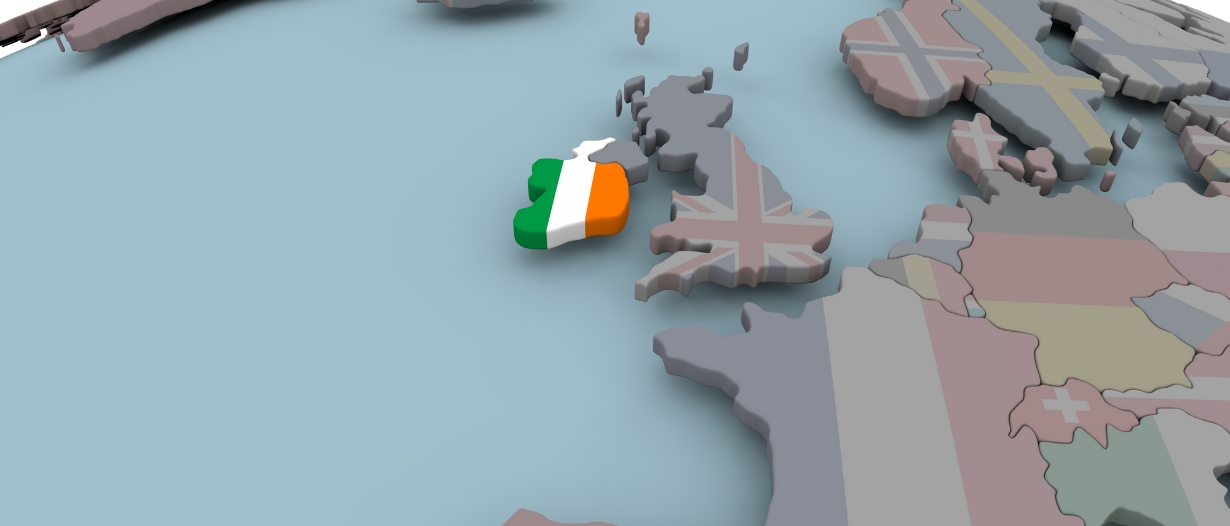Brexit’s greatest roadblock currently takes the form of a 310-mile border spanning the Irish countryside. How come?
A Delve Into the History Books
Northern Ireland and the U.K. Have a long and complicated relationship. The latter half of the 20th century was one of its most turbulent periods, as clashes between nationalist and unionist groups killed nearly 4000 people between 1968 and 1998. The violence ended courtesy of the Good Friday Agreement, signed in April of 1998. Among its many provisions, the agreement ensured free movement of people and goods across the U.K’s only land border — that there would never again be a built-up border between the Irelands. This was one of the most essential clauses of the Good Friday Agreement, and was upheld without incident for nearly twenty years.
Brexit, as it wont to do, complicates matters. Northern Ireland, as part of the United Kingdom, is of course currently in the process of negotiating its exit from the European Union (along with every other province of the U.K.). The Republic of Ireland, not part of the United Kingdom, will undoubtedly remain an EU member. This means that the 310-mile border between Ireland the province and Ireland the republic has now become the U.K’s only land border with the EU. A “Brexit means Brexit” scenario would imply that goods travelling across this border would be subject to screening, tariffs, checks, etc. This necessitates some level of infrastructure at the border, which would directly contradict the Good Friday Agreement.
All involved parties (The U.K, the EU, and Ireland) agree that this outcome would be undesirable. Though it may leave the staunchest of Brexiteers upset, breaking the vital promise that is the Good Friday Agreement is simply not an option. Besides being a political nightmare, it would also threaten peace in the region: the New IRA (Irish Republican Army; a paramilitary group dedicated to fighting for a united Ireland) claims that “any [border] infrastructure would be a legitimate target for attack”.
Therefore, it is essential that the border remains open. Seeing as the question of border infrastructure comes as a consequence of U.K./EU trade policy, solving the issue is a matter of arranging new trade guidelines. U.K. policymakers are forced to renegotiate the border, determining where U.K. rules start and EU rules end (and vice-versa). If the U.K. is to leave the EU, and the U.K/EU border cannot split the Irish island, then where exactly should the border go? This is the challenge that faced Theresa May, and now faces Boris Johnson.
Two Approaches: May and Johnson
Theresa May’s workaround took the form of a backstop provision in her withdrawal agreement. This provision prevented the formation of a border with customs controls between the Irelands post-Brexit. While May was in power, there were “no customs or regulatory checks on goods passing between [the Irelands]”. Under May’s leadership, Northern Ireland would have been permitted access to the EU single market and customs union, despite being a province of a country that wants to leave the EU altogether.
For Prime Minister Boris Johnson, Theresa May’s deal did not go far enough. Johnson wants to see the whole of the U.K. — Northern Ireland included — divorce itself from the EU customs union, and his new deal reflects that. He’s proposed an “Irish sea border”. This would include customs checks on goods entering and leaving Northern Ireland, but only at airports and seaports, leaving the land border with the Republic of Ireland open. In theory, this is a rather elegant solution to a complex problem. In practice, many take issue with such a proposal.
The Democratic Unionist Party (DUP), a pro-Brexit, unionist Irish party, refuses to support this proposal. According to the DUP, Johnson’s sea border still does not do enough to curtail EU influence — a viewpoint shared by none other than Nigel Farage. Additionally, Labour party leader Jeremy Corbyn has called Johnson’s deal worse than Theresa May’s.
With regards to Northern Ireland, The U.K. seems to want what it can’t have. If a border over land is unthinkable, then it must go somewhere else: that much is agreed on. However, any sort of border, be it over land, water, or air, would require at least some degree of EU oversight — also considered unacceptable. This is the impasse that continues to confound Brexit negotiations. Where does this leave the trade space?
Consequences for Firms
As always, the front lines of trade are manned by firms in the import/export business. As far as these companies are concerned, the biggest question is that of tariffs and regulation — where they will and won’t apply. Boris Johnson’s deal would result in the following:
- Northern Ireland would be able to take advantage of future trade deals.
- Goods sent from Great Britain to Northern Ireland would see no tariffs apply, unless sent through the Republic of Ireland. In such a case, tariffs will be collected at airports and seaports.
- In the case of goods being shipped from Ireland to Great Britain through Northern Ireland, tariffs will apply, and be collected at seaports.
- Goods sent from Ireland to Northern Ireland would see no tariffs.
For the time being, uncertainty will shake the U.K/Ireland trade space. There is also potential for supply chain disruption, red tape, and uneasiness from the trade finance sector.





























